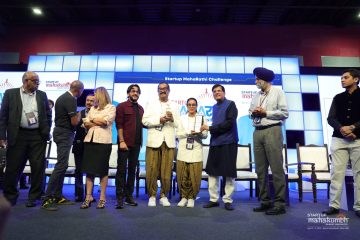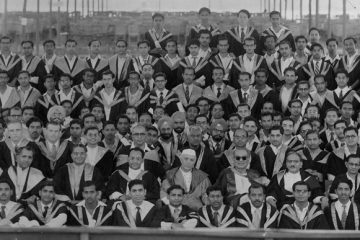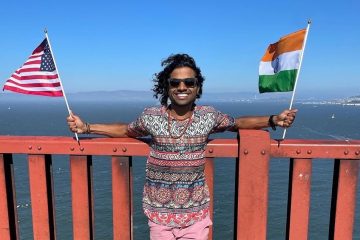On 25th December 2021, thousands around the world enthusiastically watched the Ariane 5 heavy-lift space launch vehicle carry the James Webb Space Telescope (JWST or Webb) to its orbit.
However, not many are aware that this launch from the European Space Agency (ESA) spaceport in French Guiana had a unique KGP connection.
Alumnus Dr. Ranbir Sinha (B.Tech/Aero/1981) worked on the structural design and simulation of the Ariane 5 nose-cone and Payload Fairing (PLF), which protected the Webb during the launch.
Launching The Webb
The James Webb Space Telescope (JWST) is the next great space science observatory that will take up the baton from the Hubble Space Telescope. It has been designed to seek answers to the unknown of the Universe and make breakthroughs in astronomy. Webb, an international partnership between the European Space Agency (ESA), The National Aeronautics and Space Administration (NASA), and the Canadian Space Agency (CSA), has been tasked with unraveling our origins. It will look into the formation of stars, planets, and galaxies in the early Universe.
The 17 m tall and 5.4 m diameter PLF on the Ariane 5 was made of light-weight Carbon Fiber Reinforced Plastic (CFRP) and Glass Fiber Reinforced Plastic (GFRP) Sandwich panels which were assembled with aluminum alloy rings and a magnesium alloy ‘Vertical Separation System’. Dr. Sinha’s responsibility was to ensure its separation without hitting the payload or the launcher.
Life after KGP
While talking to the KGP Chronicle, Dr. Sinha reminisces about his KGP days. He said that the practical problem-solving skills he learned as a student empowered him the most in his career. He recalled his NCC Airwing days at IIT KGP and credited it with not only inculcating discipline, self-confidence, teamwork, leadership, and perseverance in him but also in shaping his personality.
After graduating from IIT Kharagpur, Dr. Ranbir Sinha did his M.S. and Ph.D. from the University of Minnesota, USA.
For the past three decades, Dr. Sinha has been involved in the design and analysis of numerous space structures including Automated Transfer Vehicle for the International Space Station, the Meteosat Second Generation, Atlas V Payload Fairing, the X-Ray Multi-Mirror Telescope, the Rosetta Spacecraft High Gain Antenna mechanism, and many more.
Dr. Sinha currently focuses on creating opportunities in large-scale practical engineering education. ACSESS is one such platform through which he and his team are helping engineering and science students in India improve their professional communication skills in English.
He also heads the Sinha Research Institute in Switzerland.
Expressing his views on the Indian space industry, Dr. Sinha says that he sees promise in the growth trajectory of the future of the aerospace industry in India. Beyond ISRO, he believes that private aerospace companies have the potential to become world leaders in specific niche areas in both the commercial and military aerospace sectors.
In his message to young students in India, Dr. Sinha advises the learning of a wide range of subjects and developing multiple skills. He highlighted that learning itself is not enough and the learning must be converted into finding applications and creating useful solutions and products. He further advised the mastering of communication, social, and leadership skills. Finally, he asked the young generation to never forget our great culture and heritage.
Content Writer:- Arkaprabha Pal, Office of Alumni Affairs & Branding
Email: pal18arkaprabha@gmail.com
Pic Courtesy- European Space Agency
Dr. Ranbir Sinha



